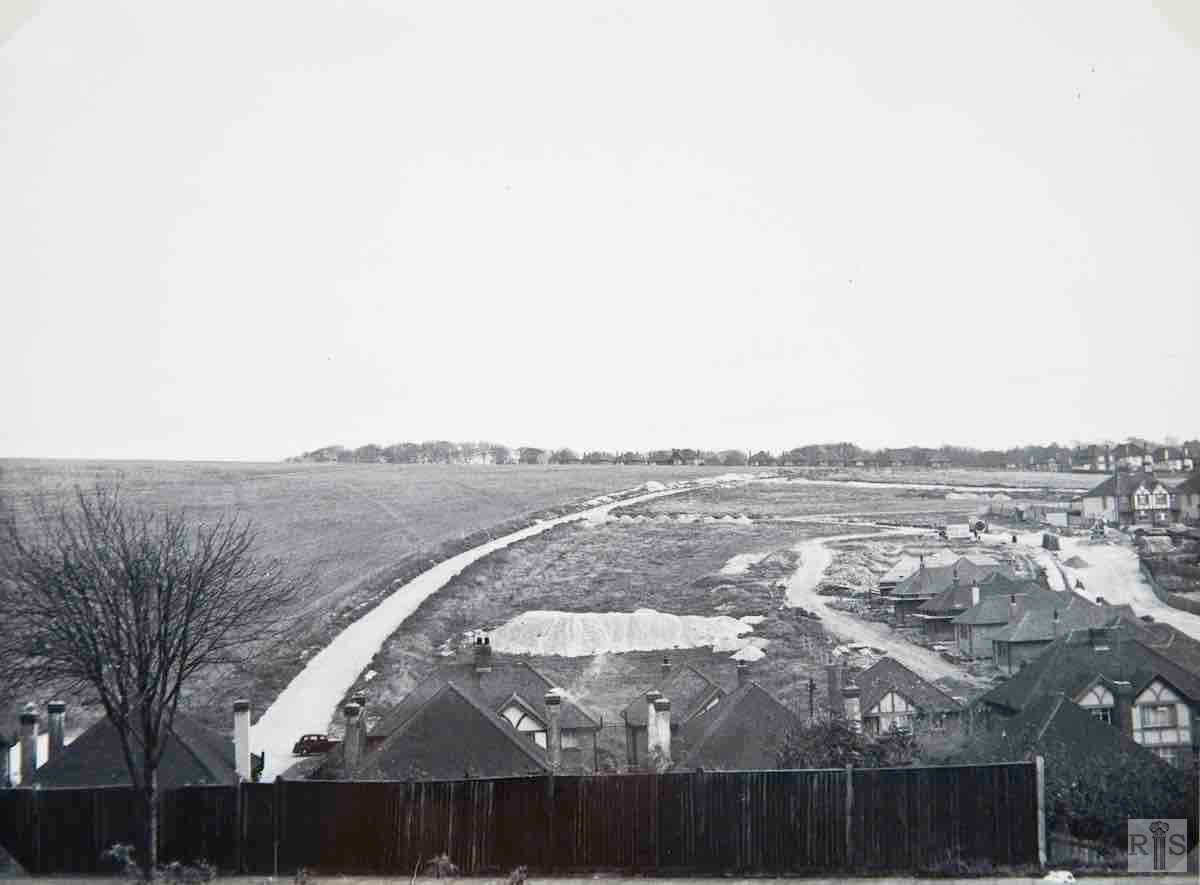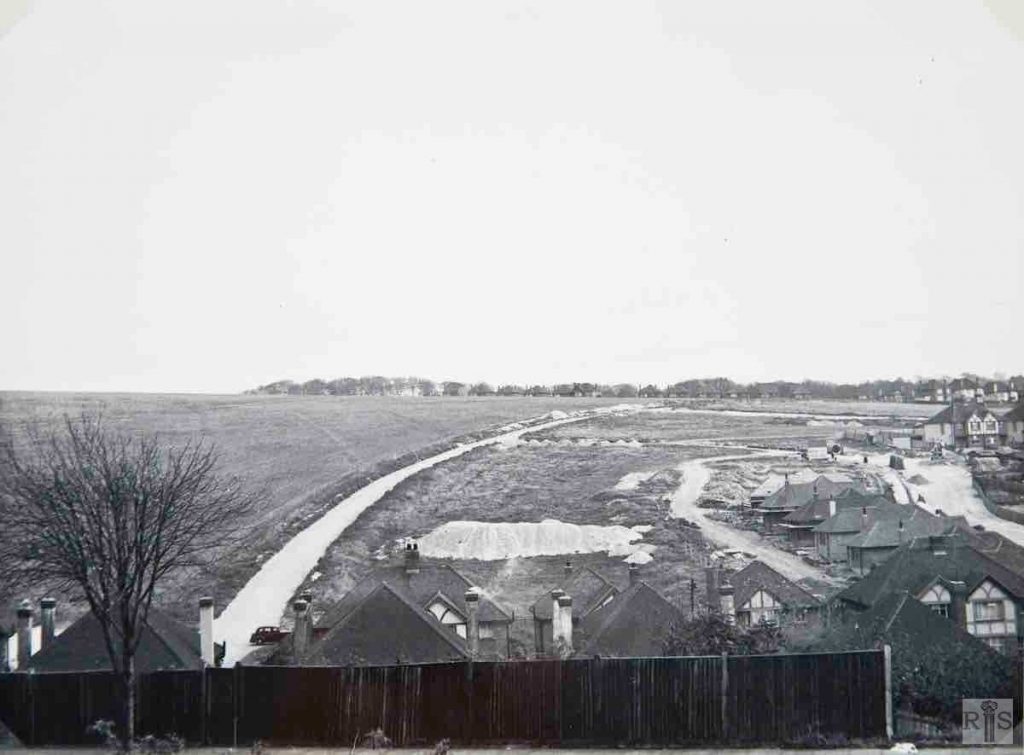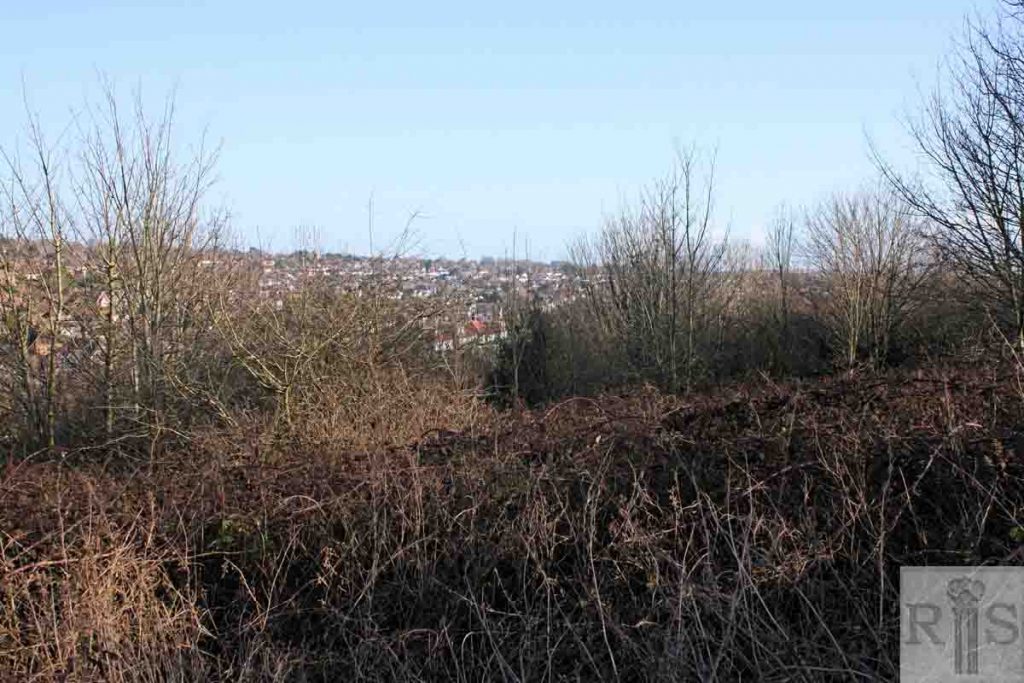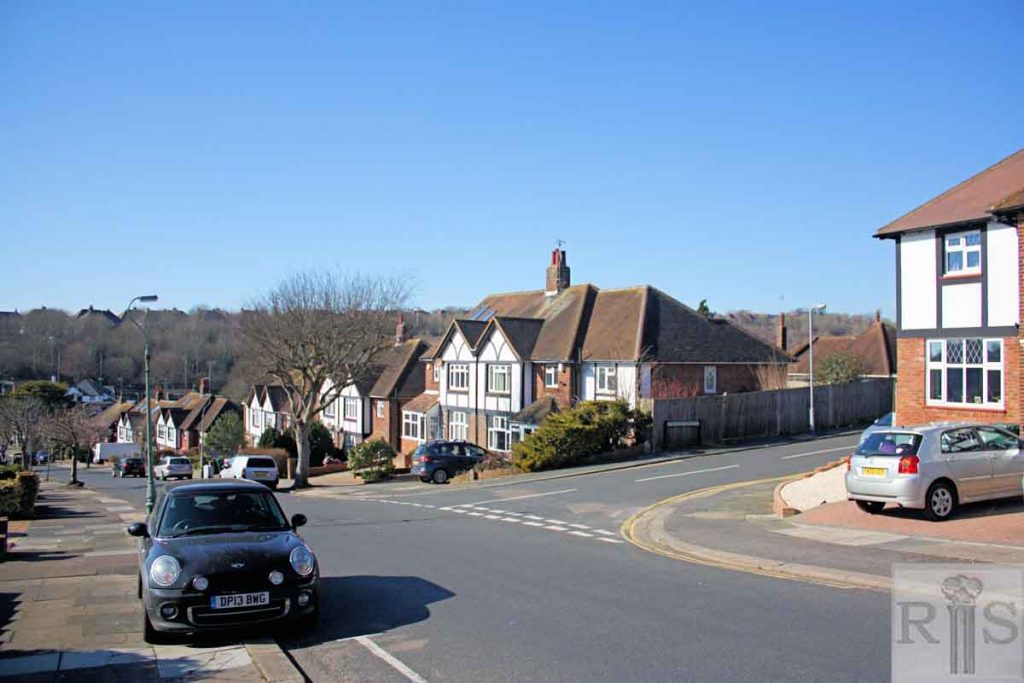
James Gray: All the houses seen in the photograph above were built by Cook’s who first started building in Old Shoreham Road as far back as 1933. This photograph, from Nevill Road on 26 October 1956, shows bungalows building in Edward Avenue with Queen Victoria Avenue newly laid out. High up on the hill will later be built a primary school. jgc_36_140
James Gray: A view from the field below Downland Drive, in October 1955. In the distance can be seen the building of Cobton Drive (derived from Cook Brighton Ltd.) and Edward Avenue had just been laid out. The heap of chalk seen in each photograph was not a natural feature just a temporary dump of spoil from the neighbouring roads. jgc_36_141
James Gray: In my collection there are many photographs of Toads Hole Farm buildings and cottages, mostly taken from roads to the south-west and showing the gradual building development that followed the Second World War. Here, however are two views from the south-east showing the peaceful area as it was on 31 December 1938, when the photograph was taken.
James Gray: See jgc_36_150 above. jgc_36_151
2019: The 1938 photo is a close-up view of that seen in jgc_36_150, showing the old Toads Hole Farm buildings, with the present-day junction of Goldstone Crescent and King George VI Avenue to the left. The 2019 photo was taken from Queen Victoria Avenue, looking westwards across to Charles Close. (Photographer: Alan Hobden)







